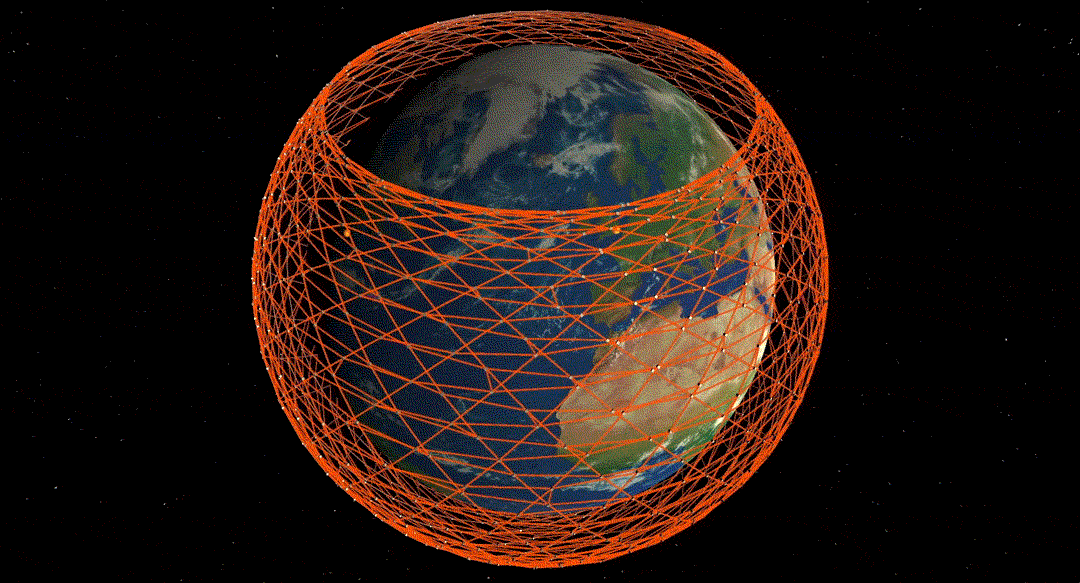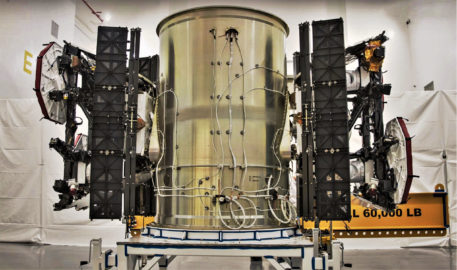Satellite Internet Starlink from SpaceX - "license to print money"

According to a draft paper written by network systems researcher and professor Mark Handley, StarX satellite Internet from SpaceX can make fundamental changes to the work of the network economy and computer networks, with just a third of satellites in orbit from the initial proposal to 4425.
Dr. Handley suggests (according to his colleague at University College London) that such a network, which is offered at SpaceX, can quickly become a “print money license” for financial institutions and banks, thanks to the tangible benefits of a significant reduction in communication delays , and this can be a profitable advantage for traders.
A colleague of Dr. Hadley (Reddit / u / davoloid) summarized his position.
')
“A computer science professor (Mark Handley), who specializes in networking systems, conducted a Starlink simulation based on the information available. The network will have very good communication over long distances with low delays, such as when sending messages. This is very important for banks and similar companies that always want to receive information very quickly. They pay a lot of money for networking, often to private rather than ordinary commercial providers. Even with the first phase of 1600 satellites, SpaceX will have big revenues. ” - Reddit / u / davoloid, 11/2/18

Recent experience has shown that high-frequency trading, in which modern equipment and algorithms, are used to quickly trade securities, in which computers buy and sell positions within fractions of a second, has reached its maximum development. This means that in just a few decades, high-frequency trading has gone from a “undermining” basis and a profitable technological advantage to a fundamental part of the ever-changing financial infrastructure of the world.
“The story of high-frequency trading is over. Now it is a mature industry, the same built-in function of our society, as the Mutual Investment Fund or income tax. ” - Tim Worstall, 2017
“High-frequency trading is still involved in the high-speed informational race, and sometimes participates in peeling off its market makers colleagues. Perhaps today to rip off slow traders, for high-frequency trading, more difficult and more expensive, but make no mistake, it has not disappeared. ". - Themis Trading, 2018
In the same way as electricity, the Internet and railways have gone from kings to marginal and ordinary enterprises. It seems that high-frequency trading has shifted from an emerging and changeable technology to the bulk of the global infrastructure.
Dead model, as such, it is not. Just as technological changes associated with the transition to new technologies force service-based companies to update or die, and it seems that the availability of Starlink (or any comparable Internet constellation) will create a huge imbalance between financial institutions that quickly adapt, and those who could not or did not want.
If, ultimately, Starlink takes place, there will undoubtedly be an extraordinary surge in investment in a competitive financial infrastructure, with institutions desperately seeking new ways to remain competitive. Dr. Handley’s draft document, the accompanying video and clear activity among colleagues about the capabilities demonstrate (at least theoretically) that even a third (37%) of the SpaceX constellation of the original Starlink satellites, 4425, will show significant improvements in reducing the delay between responses over long distances.

The separation of Starlink satellite prototypes from the 2nd stage of the Falcon 9, February 2018 (SpaceX)
Phase One Phase One
With the introduction into orbit of all 4425 satellites, the capabilities of the system will approach or even surpass the theoretical fiber optic cables. In addition, SpaceX plans to bring an additional constellation from 7,520 satellites to low earth orbit (~ 350 km), which will more than double the capacity, and at the same time significantly reduce the response delay, in a very productive primary constellation of satellites (~ 1100- 1300 km).
Of course, SpaceX has a lot of work left, even before they can realize their plans or have the technical capability. In addition to regulatory issues and concerns about space debris with potential ~ 12,000+ new satellites, SpaceX must overcome the single or double barrier in terms of the number of satellites produced and output to orbit. Nevertheless, if someone is going to make such an unusual feat, then there is no better candidate than SpaceX.
Starlink Animation by Dr. Mark Handley
Source: https://habr.com/ru/post/429658/
All Articles